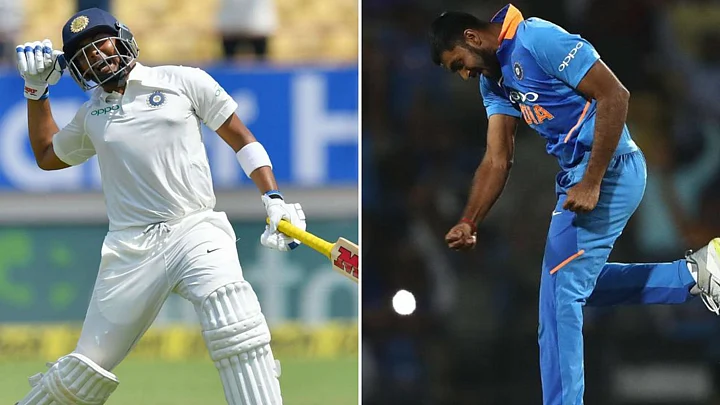The appraisals have come early for India’s cricketers.
While most of the working world waits with bated breath for the new fiscal year to kick in – and for their monetary worth be assessed – Indian cricket stars were made aware of their financial status for the upcoming cycle with the announcement of the central contracts for 2018/19 by the BCCI on Thursday, 7 March.
There were significant gains for some, none more notably so than Rishabh Pant – who went from not being part of the 26 contracted players last time around to straight away breaking into Grade A, the second-highest category, which fetches a Rs 5 crore retainer for the year.
Some others, such as Bhuvneshwar Kumar and Shikhar Dhawan, took pay-cuts, as they were demoted to lower brackets from what they previously held.
But most gutted, arguably, would be those who didn’t get a contract at all, despite having been part of the team in recent times.
The Quint takes a look.
Prithvi Shaw
The most glaring absence from the contract cycle, to many.
The 19-year-old batsman might have played only two Tests, which serves as a potential reasoning behind the decision. But a closer look suggests why India’s Under-19 World Cup-winning captain has reason to feel aggrieved.
In those two Tests (against West Indies at home), Shaw rocketed into the country’s conscience, and had done enough to position himself as the team’s first-choice opener – a role he was set to carry on with in Australia, only to be ruled out ahead of the four-match series after suffering an injury during India’s warm-up game.
It was an injury sustained on national duty; nothing, before or after, has suggested that Shaw won’t be a first-choice starter in Test matches once he’s fit.
Vijay Shankar
He featured in only five T20Is in 2018, but in the two-and-a-bit months since the turn of the calendar, Shankar has been a frequent presence in not just India’s limited overs squads, but their playing XIs.
Prior to the third ODI of India’s five-match series against Australia, Shankar has played five ODIs – with a starring role, at that, in the latest of those appearances, at Nagpur.
All put together, the 28-year-old has 15 international outings to his name since the beginning of 2018.
That’s one better than Manish Pandey, who finds himself possessing a Grade C contract, despite not having been selected in any Indian squad since the T20I leg of the Australia tour – and not having played an international game since November.
What’s more, the all-rounder appears to be close to clinching a World Cup ticket.
Surely, a player who is likely to make the cut for a 15-man World Cup squad should be considered good enough to be handed a contract that has been offered to 25 others?
Krunal Pandya
Based purely on number of international games played, the elder of the Pandya brothers is only second to Shankar in warranting a central contract from the BCCI.
Krunal, in what is a nascent Team India career, has only featured in the T20I format – but played 11 games, a sizeable sample for someone who only earned his maiden cap as recently as November.
Perhaps the fact that he isn’t ‘established’ as an India player worked against him, but as was the case with Shankar, one could again point towards Pandey and argue the left-handed all-rounder’s case.
Shardul Thakur
Thakur has played as matches for India as Pandya (all since the start of 2018), and has one thing in distinction to all the others on this list: at least one appearance in every format.
While he wouldn’t be likely to make the cut for an Indian fast-bowling attack in Tests, given the unprecedented success of the first-choice seamers in red-ball cricket, Thakur did get a game when West Indies came visiting.
Unfortunately, it lasted all of 10 balls – as a right thigh injury cut short his Test debut.
But the right-arm seam-bowler was also involved in three ODIs, and seven T20Is.
Siddarth Kaul, Mayank Agarwal
These are two cases not as strongly positioned as the earlier three – but not weak arguments either.
Kaul’s sample size of India caps – three ODIs, three T20Is – isn’t large, but the 28-year-old fast bowler has consistently been selected in Indian squads off late. He was, in fact, even part of the roster for the first two ODIs against Australia, before Bhuvneshwar Kumar returned from his rest for the remainder of the series.
For Agarwal, the argument is based more on quality than quantity; also 28, the top-order batsman fetched a long-awaited India debut in Australia – and seized the opportunity with two half-centuries in three innings, including a fluent 76 in his first outing at Melbourne, which set the tone for a famous Indian win.
(At The Quint, we question everything. Play an active role in shaping our journalism by becoming a member today.)
